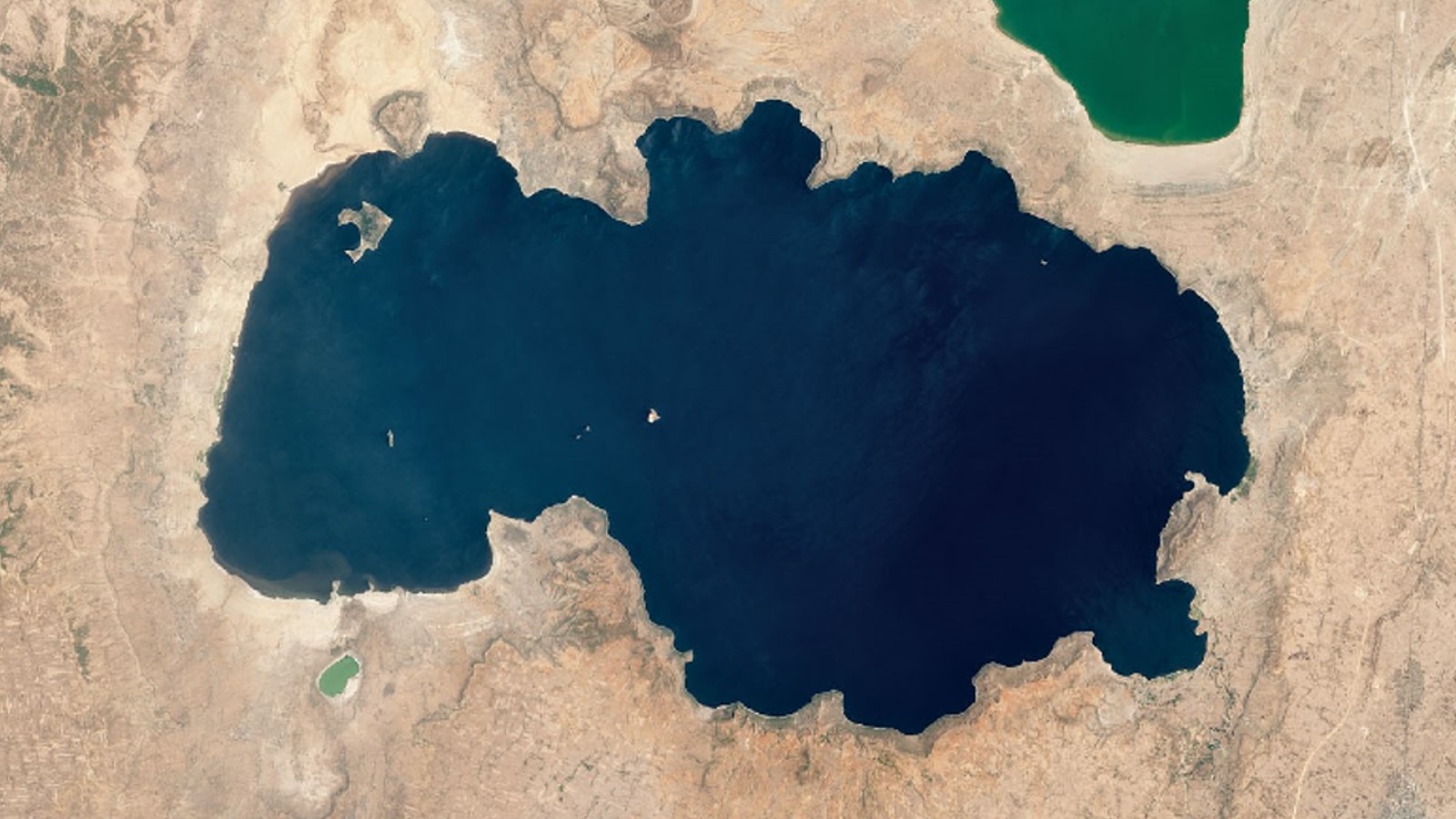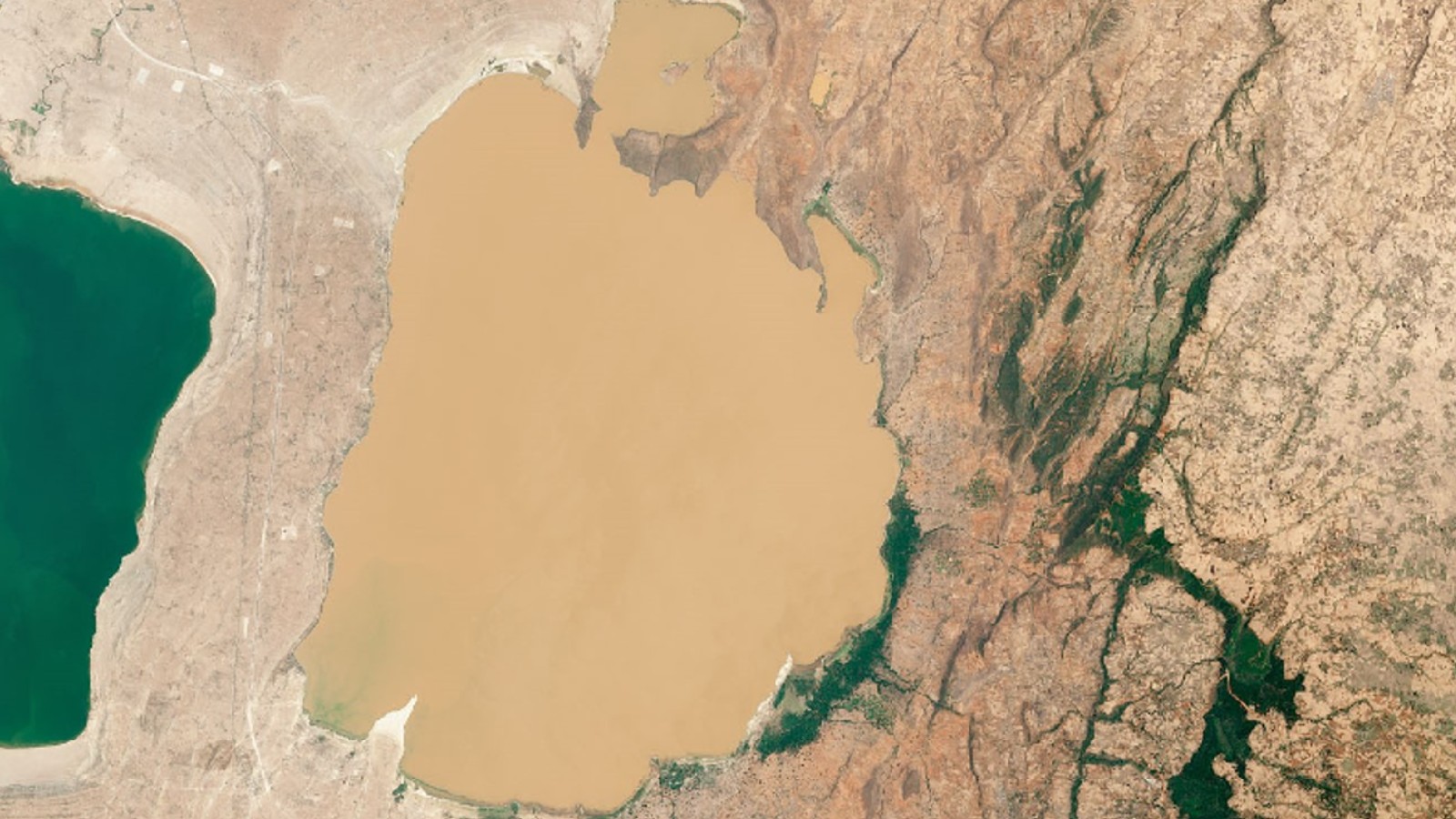Trio of yellow, blue and green lakes in Ethiopia stuns in striking satellite image
All three lakes used to be part of the same ancient body of water.
A trio of technicolor lakes in Ethiopia, each one a different color from the others, is visible in stunning detail in a satellite image recently released by NASA. The unusual colors are the result of numerous factors, including water chemistry, depth and inhabiting wildlife.
The three lakes are Lake Shala, which has a deep blue hue; Lake Abijatta, which is green in color; and Lake Langano, which has a sandy-yellow hue similar to the surrounding land. The lakes are located in Ethiopia's Great Rift Valley, around 124 miles (200 kilometers) south of the capital, Addis Ababa.
The Landsat 8 satellite, which is co-owned by NASA and the U.S. Geological Survey, snapped the striking real-color image months ago using the onboard Operational Land Imager. The image was released online Oct. 7 by NASA's Earth Observatory.
Related: Landsat satellites: 12 amazing images of Earth from space
Lake Shala, which is around 7.5 miles (12 km) long and 17.4 miles (28 km) across at its widest point, is the deepest of the three lakes, with a maximum depth of 873 feet (266 meters), which makes the water appear a deep blue color from above. The lake has numerous vents on its bottom that pump sulfur into the water. As a result, the lake is highly alkaline, meaning it has a very high pH. Despite the extreme conditions, the lake contains a large number of small crustaceans and microorganisms that support large flocks of visiting flamingos and pelicans, according to Earth Observatory.
Lake Abijatta, which is around 10.6 miles (17 km) long and 9.3 miles (15 km) wide, is the shallowest of the three lakes, with a maximum depth of 46 feet (14 m). As a result, Abijatta is the most variable of the pictured lakes; within the last 50 years, the lake has lost around one-third of its area, according to Earth Observatory. Lake Abijatta's green color is most likely due to a bloom of phytoplankton on its surface.
Lake Langano, which is around 11.2 miles (18 km) long and 9.9 miles (16 km) across, is fed mostly by streams to the east. The lake's yellow color comes from brown sediment that is transported from nearby mountains by the rivers that feed it. Langano is a popular destination for beachgoers because it is the only lake in the region not inhabited by parasitic worms that transmit a potentially fatal disease known as schistosomiasis, according to Earth Observatory.
Get the world’s most fascinating discoveries delivered straight to your inbox.



The contrasting appearance of the lakes is even more surprising considering that all three used to be part of a single ancient body of water known as Lake Galla, which also included the nearby Lake Ziway. The enormous ancient lake was likely connected to the sea via the Awash River (which still flows today) up until around 10,000 years ago. At that point, tectonic plate movements and changes in rainfall patterns caused Lake Galla to begin to dry up. By around 2,000 years ago, the lake had fractured into the different lakes visible today, according to Earth Observatory.

Harry is a U.K.-based senior staff writer at Live Science. He studied marine biology at the University of Exeter before training to become a journalist. He covers a wide range of topics including space exploration, planetary science, space weather, climate change, animal behavior and paleontology. His recent work on the solar maximum won "best space submission" at the 2024 Aerospace Media Awards and was shortlisted in the "top scoop" category at the NCTJ Awards for Excellence in 2023. He also writes Live Science's weekly Earth from space series.



